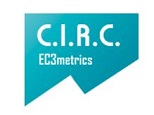Recepción de la filosofía natural aristotélica
Tres lecturas del Libro I de la Physica: Averroes, Grosseteste y Tomás de Aquino
DOI:
https://doi.org/10.53439/stdfyt31.16.2013.171-198Keywords:
Natural philosophy, medieval Aristotelianism, Averroes, Thomas Aquinas, GrossetesteAbstract
The reception of Greek philosophy in the Latin world, especially during the scholastic period and its predecessors was carried out mainly through the reading and commentary of the translations (first from Arabic and then directly from Greek) of the works of the great Greek and Roman authors. Hence, the importance given to the philosophical commentary as a gender during this period. The following forms can be distinguished: a) explanatory commentary; b) augmentative commentary (development); c) integrative commentary (having the aim of being used as premise in an argument); d) reaffirming commentary (shows agreement between the doctrine established and particular authorities). I have named it “transversal genre” because: a) it is present, evidently, in the texts deemed as such by their authors; b) it is present in one of the four abovementioned variants. This transversality is concurrent with the theoretical availability of all the forms of commentary, which are determined in turn by several purposes. These are, ultimately, the forms that explain the concrete forms in which the text is exposed and eventually developed according to the commentator’s theoretical project. The multiple use of the scholastic commentary can be observed by considering three readings of a work of major importance: Aristotle’s Physica. Focusing on its first book, where the great Aristotelian theories about the natural being (later considered on the metaphysical level) are developed, I will show “step by step” (the most complete way) three varieties of commentaries which are different from each other and in relation to the textual structure scrutinized here: Averroes, Robert Grosseteste and Thomas Aquinas. I will try to display the different expositive options as a reading corresponding to the philosophical project of each of them. This analysis is further completed with a concrete example of diversified expositive result: the conceptualization of prime matter.

















